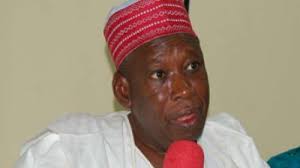

By Nuel Suji, Abuja.
Palpable tension enveloped the National Assembly Tuesday morning, even as Police mounted heavy security presence in and around the premises preparatory to the elections of its leadership.
Already, there are concerned by the leadership of All Progressive Congress (APC) over the voting pattern to be adopted for the election into the office of President of the Senate as the Senate’s rule is silent on whether to employ either secret voting or open voice vote for the election.
The Senate is expected to be inaugurated first by the Clerk of the National Assembly before the House of Representatives, and defiant APC lawmakers have vowed to vote for candidate of there choice as against the ones pushed forward by the party.
The APC being the party with majority in the two Chambers is expected to produce the President of the Senate and Speaker of the House of Representatives.
But there are fears that the All Progressive Congress (APC) leadership may not have its way in pushing through its candidates for both the House of Representatives and Senate should the voting pattern be made secret.
The party at its shadow primaries last Saturday had chosen Sen. Ahmad Lawan (APC, Yobe) and Rep. Femi Gbajabiamila (APC, Lagos) as its candidates for the Senate Presidency and House Speaker in the Tuesday elections.
But, their main rivals, Sen. Bukola Saraki (APC, Kwara) and Rep. Yakubu Dogara (APC, Bauchi) had kicked against the party’s arrangement vowing to present themselves as candidate in the elections scheduled to hold inside the two chambers today, even as the party insisted its members must toll party line on the matter.
In the 2011 election in the Red Chamber of the 7th National Assembly that produced Senator David Mark as president, was conducted under the open voting pattern.
Investigation by our correspondent revealed some senators might not be comfortable with open voting pattern on the floor of the Senate, as it the party can monitor individual senator’s voting choice, and could be vilified by party should anyone voted against its position.
Briefing newsmen last week, the former Chairman, Senate Committee on Rules and Business, Senator Ita Enang was evasive on the procedure to be used by the 8th Senate at electing its Senate President on Tuesday(today) s
According t Enang: “The procedure is there in the Rules and I am not going to participate in the voting, so, I will be very careful not to delve into it. In the practice we had in the last session during the election of David Mark, they called each senator, you stand up, mention your name and mention the senator you vote for”.
The Senate rule 3 order (d) if more than one senator-elect is proposed as President of the Senate, Clerk shall after the second nomination?” And if there are no further nomination, the clerk shall say, I declared nomination closed”.
(E) when only two Senators-elect are nominated and seconded as President of Senate, the election shall be conducted as follows:
Subsection(1) the Senate shall divide with proposer and seconders as Tellers.
(11) Voting shall be conducted by the Clerks-at-the-table using the division list of the Senate with Tellers in attendance. The Clerk of the Senate shall submit the result of the division to the Clerk of the National Assembly.
(111) The clerk shall then declare the senator-elect who has received the greater number of votes elected as President of Senate.
(F) when more than Senators-elect are nominated and seconded as President of the Senate, the division shall be conducted in the manner prescribed(e) and the senator-elect who has received a majority of votes shall be the President of the Senate. In the event of no senator having received a majority of votes in the division, the name of the candidate having smallest numbers of votes shall be excluded from subsequent division.
Although, according the rule of the Senate, during the election there shall be no debate and no question of privilege may be raised.













